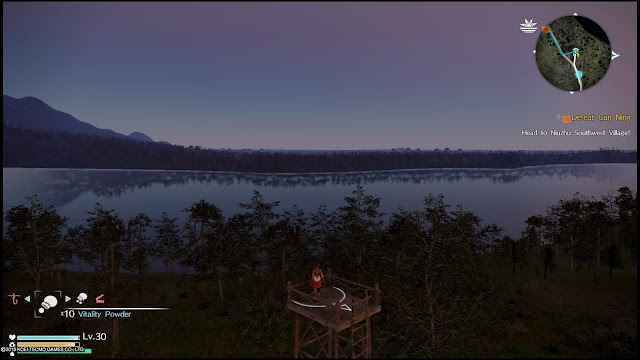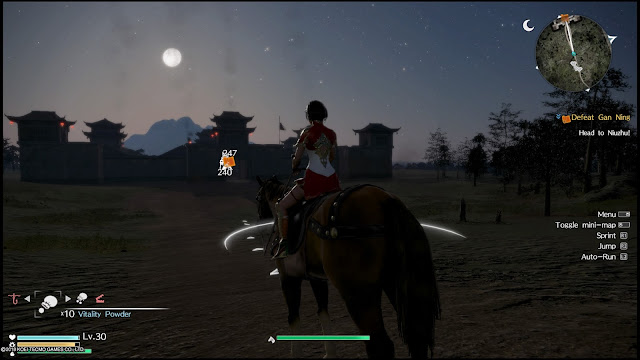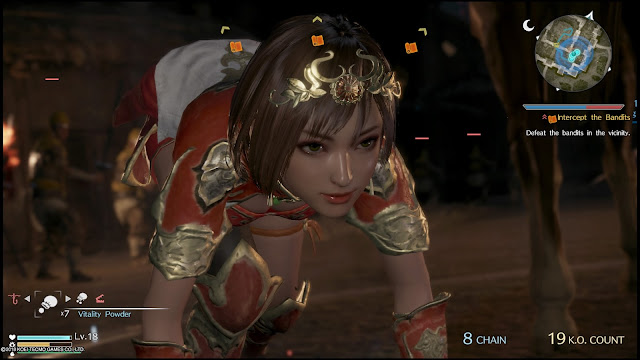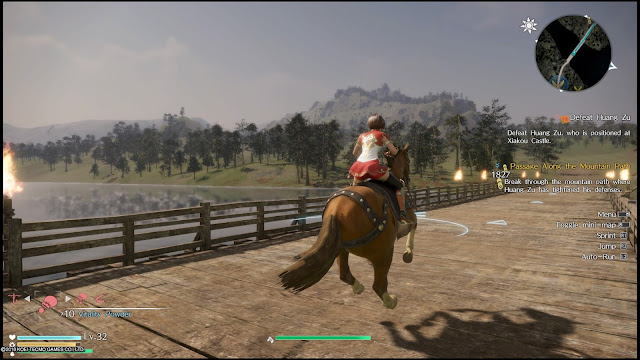Review by Matt S.
Romance of the Three Kingdoms is one of the most dense, lengthy, weighty books written in any language. It’s 2,339 pages long. For context, War and Peace, the historical novel that people always love to reference as being a massive slog of a read, is barely more than half the length, at 1,225 pages. Anything longer than 500 pages is a slog of a read, let alone a book almost five times that length. But not a word of Romance of the Three Kingdoms is wasted, either; it is truly one of China’s greatest contributions to the world of literature and art, considered by them to be one of the four great pieces of classical literature, and it’s an essential read.
Such a huge book has provided Koei Tecmo with a massive wealth of material for its Romance of the Three Kingdoms strategy series, and those games have always been spot on in reflecting the core military strategy at play through the book. The problem that the company has always faced in trying to make it also work for an action game – its Dynasty Warriors franchise – is in somehow keeping the density and sheer epic storytelling of the book, while condensing it right down to something that gets you into the thick of the action fast and with a minimum of fuss. The results have often been very, very good (and as anyone knows, I do love my Dynasty Warriors games), but they have been more a series of snapshots of the Romance of the Three Kingdoms novel than any genuine attempt to do the book justice.
That’s changed with Dynasty Warriors 9. This game is the most genuine effort to capture the tone and flow of the historical novel to date. The game’s toned down the more ridiculous elements that the series has been so renowned for, to give the game a more authentic design to the real history, and the sheer research and level of detail that has gone into the game is breathtaking. It’s a long slog of a game, just as the book is, but anyone who is interested in history, or clean, intense action, will get a lot of value out of this one.
The most obvious change in Dynasty Warriors 9 compared with previous games in the series is that this one takes place in an open world. Rather than representing individual battlefields through specific level design, this game instead presents players with a map of China, and the freedom to go wherever they like around it. Villages, forts and castles dot the landscape, and these have the affect of concentrating the action; as time unfolds battles and campaigns will spring up, and you’ll need to join with your side’s army, capturing minor villages and fortresses on the way to the key fortress that the leader of your enemy has holed themselves up in.
The mission structure that enables this is nothing short of perfection. So many open world games fail in being disjointed – finish one task, watch a cut scene, have some downtime before moving on to the next, but Dynasty Warriors 9’s mission structure behaves more like a flowchart, essentially spending hours slowly escalating towards each pivotal battle. Within each of the game’s 13 or so chapters, you’ll start out being given an overview to who your main opponent is for a particular battle, and the circumstances that has led to the two sides being at loggerheads. In theory, you could then immediately beeline straight to that enemy and take them on to finish the chapter after just a few minutes. In theory. The thing that’s stopping you from achieving that is that at the start of the chapter, the enemy will be 10, 15, even 20 levels beyond your character’s power, and you would find that battle almost impossible to overcome as a result.
So what you can do? Minor objectives! In the lead up to each major battle in Romance of the Three Kingdoms, there were a series of minor skirmishes, as the various warlords jostled for position while building up their forces. This is represented brilliantly in the game through this mission “tree” of sub, minor and major quests that you can undertake on route to the head castle. These missions generally task you with defeating a specific general here or capturing a minor fort over there. Completing these missions has two effects – firstly, each mission completed lowers the level of that final engagement, making the end boss that much easier to defeat. It can also unlock further missions to undertake to further knock that boss down a couple of pegs.
At the same time, as you complete quests your character will be earning experience, and levelling up him or herself. Complete most of the available missions during a conflict, and you’ll be comfortably ahead of your opponent when the final showdown happens, and there’s a nice sense of narrative in the way those missions allow you to shift the momentum to the point that the seemingly impossible suddenly becomes quite easy.
In addition to being a clever way to allow players to set their own pace and difficulty, this structure really does make you feel like you’re participating in a broader military campaign. You’ll jump on your horse and gallop between enemy and allied units making their way to one important position or another. You’ll take a shortcut through some rice fields only to recognise one of your generals trying to liberate the nearby village from a skirmish unit of enemies. You’ll ignore them, because you’ve got too much of your own work to do, but that constant flow of military activity around you, across the entirety of China, will make you feel like you are participating in nation-shaking events and conflicts.
This is why the sheer scale of Dynasty Warriors 9 is so important, and why this game simply wouldn’t have worked this way were it not open world. It would take hours to ride from one edge of the map to another without taking a break. Of course, you won’t need to do that, because there’s both fast travel and each chapter takes place predominantly within one section of the map, but that sense of expanse is necessary for giving you the impression that you’re part of something huge, and important. Again, that is fundamentally different to what we’ve experienced in the more level-based Dynasty Warriors games in the past. Broken down into levels those felt disjointed and unconnected, where as Dynasty Warriors 9 feels cohesive and continuous, and that is more true to what Romance of the Three Kingdoms is really about.
That sense of scale is the game’s presentational strength, too. Being able to stand on top of mountain and look out over an accurate rendition of China really appeals to the wargame and history fan in me. Retracing the footsteps of these armies and watching the terrain change from one region to another, as it does over such a massive expanse of land as this country, is complemented with a full day/night and weather cycle, and I tell you what, while this game doesn’t look as outright gorgeous as something like Horizon: Zero Dawn, making your way on foot through a dense grove of bamboo while the rain pelts down on you so you can quickly get to the castle you need to attack on the other side feels so much more potent, because it’s not about levels, cut scenes, boss battles and rewards. It’s about providing an authentic record of history; a supplement and complement to the book, with equal historic and cultural value.
This flows through to the character designs. Dynasty Warriors has always been known for its outlandish character designs, but these have been toned right down in Dynasty Warriors 9. Take for example Xu Zhu (historical name Xu Chu). In previous games this man was represented as being impossibly obese, as per his description in Romance of the Three Kingdoms as being a “big, strong, simple-minded fellow.” You had to respect him because he was carrying a club longer than most ancient trees are tall, but he was so cartoonish in that obesity that it was easy to forget that he was based on a historical persona. But in Dynasty Warriors 9 so much of the exaggeration is gone. Now he’s still a giant of a man, but now he’s within the realm of possibility of what you might expect of a man who would be immortalised for his size and strength in a book that would persist for hundreds and hundreds of years later.
Similarly, characters have all had their costumes toned right down to approximate classical Chinese fashion. There’s still plenty of embellishments in order to differentiate characters from one another, but those are more subtle, more nuanced. Hairdos are still true to the characters that Dynasty Warriors fans will recognise, while being a step closer to something actually possible in a time before hair product. The various factions are still colour coded for people who struggle to remember all the Chinese names and their various allegiances, but those colours are more subtle and consistently applied, almost being used to suggest regional cultures, rather than act as giant neon signs so you can tell the goodies from the baddies.
And importantly, you can turn off those ridiculous English voices and replace them, not only with Japanese voices, but a Chinese voice track, and that I believe is a first for the series, and one of the best new elements of all – playing a game based on a work of literature the Chinese revere as one of their greatest masterpieces in the language it was designed to be in adds a substantial amount of gravitas to the overall experience. Koei’s struck a delicate line between hitting the notes that long term Dynasty Warriors fans expect and slowly shifting their franchise towards something that can be taken more seriously as a study of history. But the effort has paid off. The game is that much more believable as a statement of record now, even as you’re controlling a hero mowing down entire legions all by themselves. But, even then, people who have read Romance of the Three Kingdoms won’t bat an eyelid at that. For all its epic scale, that book reads just how Dynasty Warriors plays. The great generals in the book were untouchable by common soldiers (and could indeed mow them down by the thousands), and battles were ultimately won or lost in the one-on-one duels between champions. Just as happens in Dynasty Warriors.
The one complete digression the game takes to the history is to put women on the battlefield. There are numerous female characters in Romance of the Three Kingdoms, but they never fought. Ever. They were married off so the men could curry political opportunity, or those that kept themselves more independent tempted men to do things that would change the course of history. A few could even intimidate the occasional man, but ancient Chinese battlegrounds had no room for ladies. Dynasty Warriors has multiple playable female characters that have had battlefield roles written in for them, and so they should. They’re universally awesome characters (though my heart will always go to Lady Sun – Sun Shangxiang, the feisty tomboy she is).
The other area where Koei Tecmo hasn’t paired back on the traditional over-the-top approach is with the weapons, and there is the same huge range of combat options that wouldn’t have been a part of those ancient battles as a result. The decision to have whips, magic wands, hula-hoops of doom and other impractical weapons is obviously in order to provide combat variety, and it does work for that; each character has their own preferred weapons, but you can get them to wield anything you like, and upgrade each weapon with a deep “gems” system. The combat system is generally dynamic and exciting, with all kinds of new special attacks and abilities to mix in with the normal range of Dynasty Warriors combat moves to leave you with a deep, varied, and nuanced combat system, for all its speed. So it’s hard to fault Koei for using the occasional ridiculous weapon to make sure that the game itself (which can easily run to over 50 hours to play through all the chapters just once), never grows tiresome.
The very best moments in Dynasty Warriors come when all of the above cumulates in one of the game’s truly epic battles. You’ll find yourself converging upon a major enemy stronghold, with allied units as far as the eye can see stretching on either side, either trying to get ladders up to the walls of the castle, or a battering ram to its gate. From there you have options. Do you help to keep the run to the castle walls clean so your allied units can batter down the doors in peace? Or do you find a spot to clamber up the walls, before making your way through enemy forces to open the door from within yourself? Do you bypass it all, so confident in your abilities that you can take down the entire castle yourself?
These scenes are so incredibly cinematic and the action is beautiful to simply watch flowing around you. It’s not perfect, though. The enemy doesn’t put up a great resistance to your ability to find a bit of wall, grapple up it, and then make your way through the castle from within. There should be archers peppering you in trying to do that, and if you do somehow scale the wall, you should be swamped by hordes of enemies. Often I got to the main gate to the fortress, and it wasn’t defended at all. The action involved in taking a castle never gets dull, and I appreciate Koei’s desire to focus on the cinematics than the practicalities for its first attempt at this new approach to the series’ gameplay, but it breaks immersion a little when the AI is this incompetent in defending a castle.
Away from combat it would be nice if there was more room for non-violent activities. There are some things that you can get up to during downtime, such as exploring the map to find special, secluded temples and monasteries, mountain climbing, fishing, or even buying yourself a hideaway and filling it with furniture so that other generals will visit and gawk at the wealth you’ve accumulated through your campaigns. Those are all good features, but it’s not enough to shake the feeling that there isn’t much to the world that doesn’t involve killing stuff. Of course, that’s also the case with the book, but it would have been nice for Koei to use the space afforded in “friendly” cities to give us more people to interact with and non-combat activities to get involved with. These places are almost ghost towns aside from the obligatory merchants that pop up, and doing more with these urban areas would only enhance the perception of a historically authentic world further.
There are other moments I would like to see Koei look into down the track, too. Horse riding is still not great for combat. The horse will get you from place to place quickly (and accumulated experience points and levels as you ride it so it becomes even faster), but you’re still best off dismounting once you get there, because the range of combat options that you have access to is too limited from horseback. With the scale of the battlefields in the game, if this is to be the future of Dynasty Warriors, developing a greater of range of horseback combat options will be important.
Archery is also next to useless in Dynasty Warriors 9, and that’s a wasted opportunity. There are a wide range of different arrows to use, from fire arrows to dispersed shots that fire out a bunch of arrows at once, and even some that will poison the enemy, but the number of times you’re facing off against a small enough number of enemy units for it to not be easier to run up and hit them in the face with a sword are close to zero.
What I’d like to see Dynasty Warriors to go to from here would be a hybrid between this game and something like Koei’s own Bladestorm, where you’ll lead units into battle or command them around the battlefield, but then (and unlike Bladestorm) have the full range of Dynasty Warriors actions once melee was joined. This would further open up the potential of cavalry, archers and engineer units, and give you an even better sense that you’re part of a much larger army by making the role of units seem more valuable than it does at times in Dynasty Warriors 9.
It would also be nice to be thrown on the defensive sometimes too. The chance of actually losing an overall campaign is minimal, because you’ll rarely (if ever) have to defend your main strongholds or rescue your leaders. There’s the occasional exception to the rule (such as the infamous battle of Chibi, where you need to protect Zhuge Liang as he prepares the winning fire attack strategy), but they’re scripted and infrequent, and unscripted, the enemy AI never feels like it’s threatening enough, or putting pressure on you to protect your own. Regardless of which side you play in a campaign, you’ll follow much the same pattern of aggressively knocking off missions and then finally taking on the leader in whichever castle he has claimed as his own. If you had to regularly drop back to your side’s own castles to oversee their defence; perhaps even through some like tower defence or light strategy mechanics, the game would have a useful note of depth beyond the action.
These are very minor complaints or simply ways that I could see the future of Dynasty Warriors continue to evolve from here. And that’s only when I’m sitting back and thinking about the game critically. When I’m actually playing it, all that I find to be important is just how respectful and interesting this game is in the way it depicts the history and narrative of Romance of the Three Kingdoms. That sense of scale, and the authenticity of it all, means that I just can’t put the controller down once I start. Koei Tecmo has done a remarkable job of telling the many stories of the many people that make Romance of the Three Kingdoms such a compelling book and period of history, and the beautiful cinematic consistency makes it the most perfect realisation of everything Koei Tecmo has been aiming for with this series since way back on the PlayStation 2.
– Matt S.
Editor-in-Chief
Find me on Twitter: @digitallydownld
 |
| Please Support Me On Patreon!
|















